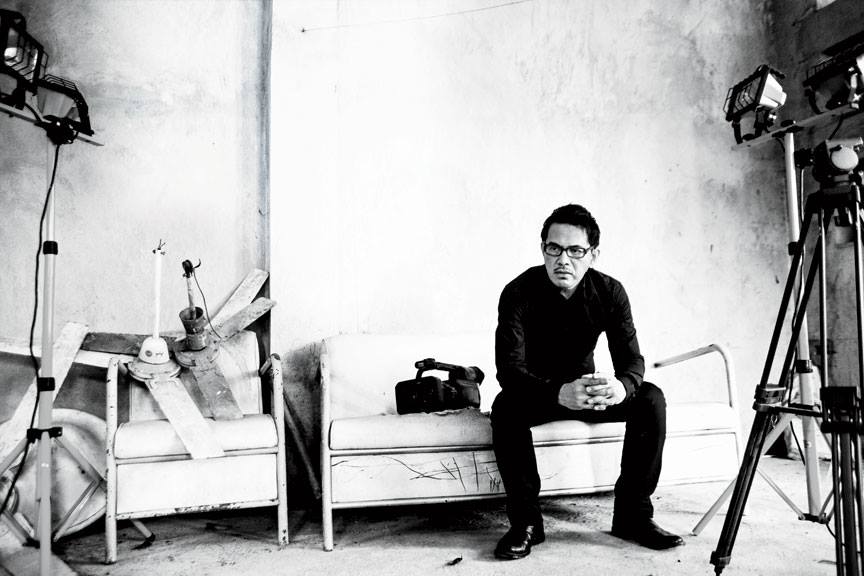What do Coco Martin and Rita Gabriola, better known as Badjao Girl, have in common? They were both discovered at random. And while it may be too early to tell what Rita’s stars have in store for her, Rita can draw inspiration from Coco (and others like him) who has gone leagues from waiting tables at a popular Filipino restaurant to starring in an award-winning film featured at the Cannes’ 62nd run.
By KRISTEL DACUMOS – LAGORZAÂ
It would be easy to look at someone like Coco Martin and say, “Oh, he has the looks. He has the luck, and that’s why he’s made it.†But a closer study of his career – one that has spanned over a decade – shows a patient and steadfast climb up, one without shortcuts.
“I never wanted to be an actor. My dream was to just work abroad,†confesses Coco Martin, whose real name is Rodel Luis Nacianceno and who hails from Novaliches, Quezon City. “Even when I was already acting in indies (independent movies), all I thought about was becoming a TNT (short for tago nang tago, an undocumented overseas worker) abroad,†he chuckles. The typical “Filipino dream†he nods, before breaking out his signature smirk.
In 2001, Coco was supposed to be launched alongside the likes of Heart Evangelista, Rafael Rosel and Khalil Kaimo as one of the talents of Star Magic’s Star Circle Batch 9. But heeding his Lola’s advice to finish his studies first, Coco dropped out right before his big debut. The only other experience he had of showbiz were a few cameos and a botched commercial. “I was supposed to have two scenes (in that commercial),†he recalls.†But the director removed one of my scenes because he said I couldn’t act. He yelled out in front of everyone, ‘Ano ba tong talent ninyo. Di marunong umarte’!†he chuckles, remembering that cringe-worthy moment.

Despite never considering acting as a serious option (nor believing that he had the talent for it), Coco couldn’t refuse Direk Brillante “Dante†Mendoza’s offer to star in his indie film Masahista in 2004. The upstart actor boldly took on the role of Ilac, an emotionally torn young man who moonlights as a masseur for gay clients. Never mind that the role needed emotional gravitas and restraint that even a seasoned actor would have difficulty pulling off, or that it would call for him to shoot love scenes in the nude with another man. But Direk Dante had faith and Coco was committed. “In all honesty, I didn’t ask what my role was; I just said yes!†he reveals. “Akala ko it would be about a masahista, yung mga bulag, not a gay masseuse,†he chuckles.
It won the Best Film Award at the 58th Locamo International Film Festival in Switzerland that same year and earned Coco the Best Actor award from the Young Critics Circle in 2006. Mendoza, who later won Best Director at the 62nd Cannes Film Festival for Kinatay (which also starred Coco).
“Abroad, our films were being lauded. But in the Philippines, no one really took notice. Indie as in ‘indie-maintindihan,’ they would say. No one understood what we were doing,†he laughs. “Plus, indie movies were different and so sometimes the audience had difficulty appreciating it. And they were low-budgeted as well. In fact, for the indie film Next Attraction, I only received P2,000 for the entire project!†he remembers.
“Gusto ko mag-abroad. Gusto ko kumita ng pera†– this was the incessant motivation that kept playing on in Coco’s mind, even when they were traveling the world promoting Masahista at the Toronto Film Festival in Canada. Instead of joining the team , Coco pulled a fast one on them and sneaked off to Alberta, Canada to be with his extended family. “I just said, sorry Direk. Di ako sasama (I’m not going).â€
In Alberta, he lived out his “TNT dream†– albeit for a short nine months. He took on odd jobs, working as a janitor at a bingo parlor, a helper for an elderly Canadian, and moonlighting as a housecleaner after hours.
But slowly, even to his surprise, homesickness – along with the cold of winter – weakened his resolve to stay. “I tried to fight it,†he mentions in another interview. “This was what I’ve long dreamed of. This was what I really wanted.†In the end, Coco came home.

Before he knew it, he had 16 indie films and the title “The Prince of Indie Films†to his name.
The opportunity of working with exceptionally creative people, watching other award-winning films that were competing in the international film festivals and getting to know likeminded actors and actresses, eventually led him one day to realize that “I wasn’t doing it for the money anymore. This wasn’t just a temporary job. Isinapuso ko ang mundo ng pelikula (I took the world of movies to heart).What was now important to me was that I make significant, noteworthy films.â€
“Working in indie films taught me humility, as well as discipline. On TV and in showbiz, people pamper their talents with air-conditioned rooms, catered meals, complete makeup teams, perks and all. And they have the budget to pay their talents. In indie films, there is no budget. You help carry the director’s equipment. You help set up before you shoot your own scene. You help in any way you can to make the movie come together,†he adds.
“Nanggaling ako sa wala and I started without the need for recognition. I don’t know how long I will be blessed as an actor. But I have been blessed, and for that, I’m thankful.â€
Recalling Direk Dante’s words of wisdom, Coco shares the best advice he has ever received – which has fared him well both in his craft as well as his life: “Dapat ka maging bamboo. Habang tumataas, dapat mas marunong yumuko. The more lumalaki ka, the more dapat maging humble ka. (You should be like bamboo. The higher you go, the more you should learn how to bend. The greater you are, the more humble you should be). â€
(Photography by RAYMUND ISAAC)Â
Editor’s note: These articles were first published in PeopleAsia’s December 2012 – January 2013 issue. Coco Martin was given a PeopleAsia People of the Year award in 2013.
You can also read about a tribute to Brillante Mendoza, director of Ma’Rosa starring Jaclyn Jose who was the Cannes Film Festival’s Best Actress, over here.






